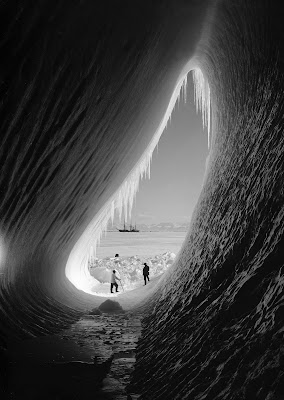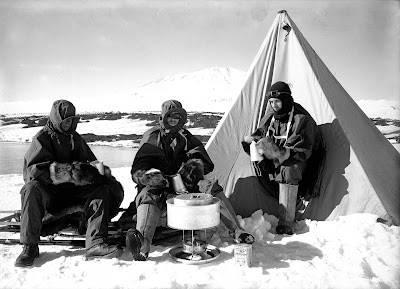|
sioc:content
|
-
 \n Las dos caras de una misma moneda. Dos modos distintos de ver la misma realidad. Ir y volver. Regresar para aprender, observar, entender pero nunca para anclarse en lo que fue. Mirar, caminar, avanzar hacia adelante. El futuro incierto pero necesario para una sana existencia.\n \n Las dos caras de una misma moneda. Dos modos distintos de ver la misma realidad. Ir y volver. Regresar para aprender, observar, entender pero nunca para anclarse en lo que fue. Mirar, caminar, avanzar hacia adelante. El futuro incierto pero necesario para una sana existencia.\n Two sides of the same coin. Two different ways of seeing the same reality. Go and return. Return to learn, observe, understand, but never to be anchored in what it was. Look, walk, move forward. The uncertain future but necessary for a healthy existence.\n  \n Río Guadalquivir de orilla a orilla. Por verte me vuelvo sin sentir la pérdida del tiempo. Y allí la Cartuja, testigo de un pasado que forma parte de mi sistema familiar. Ahora es presente y aún cuando me vaya seguirá ahí para siempre. Física e históricamente. Cuando te veo imagino a mi abuela llegando cada mañana a las naves, deprisa ante la iglesia, con cuidado cerca de los hornos. Creando con sus manos el arte de la cerámica de los Pickman. Guapa y hermosa mujer de Triana. Madre de mi madre.\n Guadalquivir River from shore to shore. I turn to see you without feeling the loss of time. And there the Cartuja, a witness to a past that is part of my family system. It´s now present and even when I leave, it´ll be there forever. Physics and historically. When I see you, I can imagine my grandmother arriving every morning to the warehouses, hurry before the church, with care near the kilns. Making with her hands the ceramic art of the Pickman. Gorgeous and beautiful woman of Triana. Mother of my mother.\n  \n Luego cruzo el río y entro en el antiguo barrio de los pescadores cuyo acceso de entrada a la ciudad de Sevilla era la Puerta Real. Pero antes, parada ante la emblemática Piedra Llorosa junto al antiguo Patio de San Laureano donde me llevaba mi abuelo a las cruces de mayo. Yo miraba hacia arriba, desde la poca distancia que me separaba del suelo, y una nube de banderines de colores bailando nerviosos, me impedía ver el cielo. Música, alegría, luz. Antiguo convento, cuartel y cárcel. Testigo de la muerte de 82 jóvenes sevillanos allá por el 1857. Culpables de tener ideas propias en un régimen autoritario. El alcalde de Sevilla, García de Vinuesa, quizo impedirlo. No pudo. En Plaza de Armas quedaron sus cuerpos abatidos por las balas de la injustia. El edil lloró amargamente sobre esa piedra que ahora permanece indemne al tiempo.\n Then I cross the river and enter the ancient district of fishermen whose inbound access to the city of Seville was "The Real Hall". But first, stop at the iconic "Tearful Stone" beside the old "San Laureano Patio" where my grandfather took me to the May crosses. I looked up from the short distance that separated me from the ground and a there a cloud of colored flags dancing nervous. I couldn´t see the sky. Music, fun, light. A former convent, barracks and prison. The death´s witness of 82 sevillian young, back in 1857. Guilty of having their own ideas in an authoritarian regime. The mayor of Seville, Garcia de Vinuesa, wanted to stop it. He couldn´t. At "The Armament´s square" stayed their bodies were killed by the bullets of injustice. The mayor cried bitterly on that stone that now remains.\n  \n Y me adentro en la calle Alfonso XII - a la calle donde yo nací, que está cerca, volveré luego-. Restos de muralla que sostenían la Puerta Real -llamada así desde la documentada entrada del Emperador Felipe II el 1 de mayo de 1570, aunque dice la leyenda, que no la historia, que Fernando III ya pasó bajo la misma tres siglos antes-. And I enter Alfonso XII street -the street where I was born, is closed to there, but I shall return later. Remains of wall that held the Real Door -called so since the documented entry of Emperor Philip II on 1 May 1570, although the legend, not history, say that Fernando III had passed under the same door three centuries earlier -\n   \n Como es ahora y como era. En el azulejo que hay en el muro pone: "En este lugar estuvo ubicada la antigua Puerta de Goles que pasó a llamarse Puerta Real en el año 1570. Fue derribada en el año 1864".\n \n Como es ahora y como era. En el azulejo que hay en el muro pone: "En este lugar estuvo ubicada la antigua Puerta de Goles que pasó a llamarse Puerta Real en el año 1570. Fue derribada en el año 1864".\n As it´s now and as it was. The tile which is placed on the wall say: "Here was located the old "Goals door" which was renamed "Real door" in 1570. It was demolished in 1864".\n  Sigo hacia la Plaza del Duque y detrás voy dejando: la capilla de las Mercedes, la Plaza del Museo, la capilla del Santo Entierro y la del Silencio -en las imágenes-. Barroco en estado puro.\n I continue to the "Duke Square" and I am leaving behind: the chapel of Mercy, the Museum Square, the Chapel of the Holy Burial and the Silence Church -at the images-. Baroque in its purest form.\n  \n  \n  Paseando hacia la Campana y calle Cuna. Hay una plaza que acoge el segundo templo católico más grande de Sevilla, tras la Catedral, la Iglesia del Salvador.\n Walking to the Campana and Cuna Street. There is a square that hosts the second largest Catholic church in Seville, after the Cathedral, the Church of the Savior.\n  Luego hacia el Ayuntamiento de Sevilla y la Avda. de la Constitución. Ese divino edificio se llama La Adriática (1914-1922), de estilo neomudéjar, es obra del arquitecto José Espiau y Muñoz. La noche está encima de nuestras cabezas y tras un glorioso Chai Tea Late en un Starbuck de esa avenida, camino de vuelta sobre mis pasos.\n Then toward the city of Seville, Avenida de la Constitution. That divine building is called The Adriatic (1914-1922), neo-Mudejar style, José Espiau y Muñoz is the architect. The night is over our heads and after a glorious Chai Tea Late in a Starbuck that avenue, way back on my feet.\n  Parada en la Iglesia de San Vicente, templo gótico-mudéjar de los siglos XIV y VX, ampliado en el siglo XVIII y restaurado en el XIX. Porque no solo de barroco se alimenta Sevilla.\n Stop at the Church of San Vicente, Gothic-Mudejar church of the fourteenth and VX, expanded in the eighteenth century and restored in the nineteenth. Because Seville not only feeds of Baroque. Y ahora sí. Calle Bajeles penetrada interminables veces con mi cuerpo. Allí nací y crecí. Desde el balcón de la casa se divisaba el Aljarafe cuando todavía el tren pasaba paralelo a la calle Torneo. De allí mi otra abuela. Dulzura y carácter en un solo ser. Espléndida mujer criada en el barrio sevillano de la Feria. Madre de mi padre.\n And now. Bajeles street penetrated endless times with my body. I was born and raised there. From the balcony of the house I could see the Aljarafe when the train passed yet parallel to the Torneo street. Hence my other grandmother. Sweetness and character in a single being. Beautiful woman raised in the Seville neighborhood of the Fair. My father's mother. Tengo suerte porque me siento heredera de lo mejor de las dos orillas de Sevilla: Triana y Puerta Real para mí son la gloria bendita -y perdónenme l@s sevillan@s de otros barrios-. Andar y desandar. Ir y volver. Antes y ahora. El ciclo de la vida se repite. Un círculo amoroso que nos va seduciendo, desengañando, enseñando, doliendo... y así hasta el viaje sin retorno. Pero éste sí lo tuvo y fue hasta y desde las entrañas de mi vida y ciudad. La parte de un día que se repite cada año desde que nací: el de mi cumple. Va por vosotros papá y mamá -porque pudiendo decir no decidísteis decir sí y yo soy el testigo-. ¡Gracias!\n I am lucky because I am heiress to the best of the two banks of Sevilla: Puerta Real and Triana -and forgive the Sevillians from other neighborhoods-, for me are blessed glory. Walk and retrace. Go and come back. Before and now. The life cycle repeats itself. A circle of love that will seduce us, disappointed, showing, in pain ... and so until the journey of no return. But yes I had and it was to and from the bowels of my life and city. The part of a day that is repeated every year since I was born: my birthday. This entry is dedicated to you: dad + mum -because you decided to say yes instead of to say no and I am the witness. Thanks!\n  \n -------------------------------------------------\n UN POQUITO DE AGENDA INTERNACIONAL:\n  \n El Museo Hermitage Ámsterdam exhibirá obras maestras de Matisse, Picasso, Van Dongen, De Vlaminck, Derain y muchos otros pintores contemporáneos, desde el 6 de marzo hasta el 17 de septiembre en la exposición De Matisse a Malevich. Pioneros del arte moderno del Hermitage.\n  \n Para esta exposición, se han seleccionado aproximadamente 75 cuadros del Hermitage San Petersburgo, que contiene una de las más bellas colecciones del mundo de artistas franceses de principios del S.XX.\n  \n Además de los mundialmente famosos maestros franceses, están representados también famosos artistas contemporáneos rusos, como Malevich y Kandinsky. Casi todas las obras de arte que estarán expuestas pertenecen a la colección permanente de San Petersburgo y la mayor parte procede originalmente de las colecciones moscovitas de Morozov y Shchukin.  \n Es la primera vez que se exhibe esta amplia colección de obras artísticas de vanguardia en los Países Bajos. La exposición centrará la atención en la génesis del arte moderno como un fenómeno de la historia del arte, pero también hará hincapié en la inspiración de los artistas mismos, que a principios del siglo pasado desencadenaban una revolución artística, un momento crucial en la historia de los movimientos artísticos.\n  \n Getty Images Gallery Presents "The Journey South" Marking the centenary of Scott's epic voyage to the South Pole, the Getty Images Gallery, in association with the Scott Polar Research Institute, is presenting a new photographic exhibition which will feature the work of Herbert Ponting, the photographer who accompanied the expedition. "The Journey South" will run from 4th February until 6th March.  \n \n \n \n Herbert Ponting's beautiful and graphic photographs record the conditions faced by Robert Falcon Scott's team of men before their final push to the pole and before tragedy ultimately struck in 1912. Ponting also captured the stark beauty of Antarctica 100 years ago, in a series of landscape shots which remain iconic and timeless to this day. \n The collection provides a stirring testament to the heroism and bravery of all involved and perfectly encapsulates the spirit of adventure and discovery that marked the epic journey. The glass plate negatives from which these images are taken are preserved in the Scott Polar Research Institute, University of Cambridge. Exhibition runs:\n Getty Images Gallery\n 46 Eastcastle Street\n London W1W 8DX\n 4th February - 6th March\n Gallery opening: Mon - Fri: 10.00-18.30,\n Sat: 12.00-18.00\n Admission free\n
|